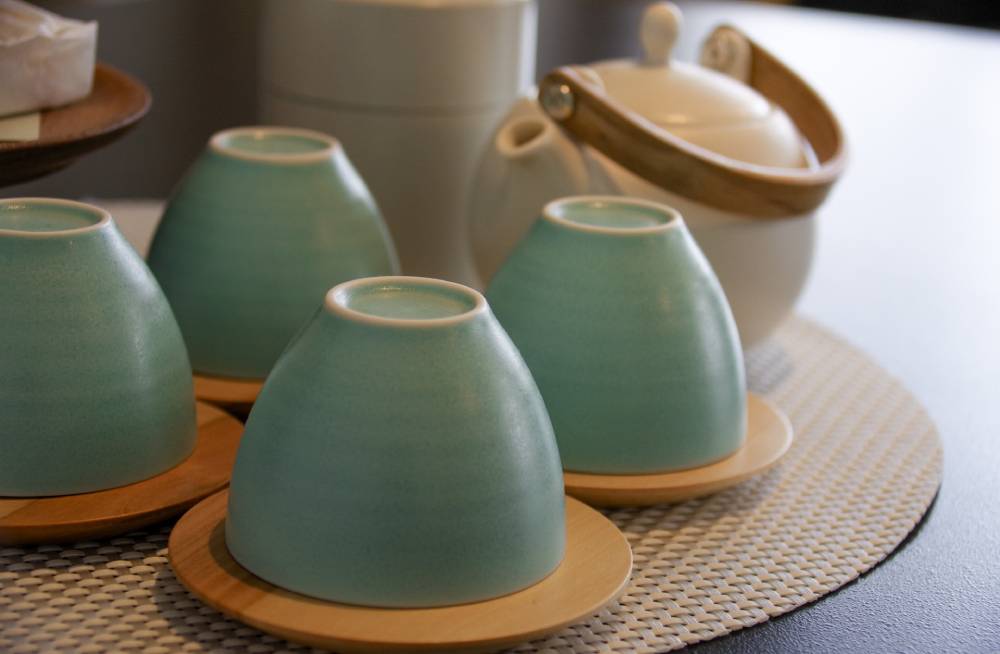The difference between Japanese Yunomi and Chawan

Tea is an essential part of Japanese culture. The cup used for drinking tea is called a “Yunomi” or “Chawan”, but do you know the difference between these two? Find out the difference quickly and find the perfect teacup for you.
What are Yunomi and Chawan
Yunomi (湯呑)
湯 refers to hot water, and 呑 refers to drinking. “Yunomi” is a teacup used for drinking hot tea or hot water. It is basically used for drinking any kind of tea, but not for drinking matcha (powdered green tea).
The official name for “Yunomi” is “Yunomi Chawan (湯呑茶椀)”. It is often cylindrical in shape without a handle. It is basically used in daily informal tea drinking.
Chawan (茶碗)
“Chawan” is a small tea bowl without a handle. Like “Yunomi”, it is generally used to drink hot tea. The official name for “Chawan for tea” is “Kumidashi Chawan (汲み出し茶碗)”. Tea bowls for drinking Japanese green tea or Sencha green tea are also called “Senchawan (煎茶椀)”, and those for drinking matcha are also called “Matchawan (抹茶椀)”. “Senchawan” and “Matchawan” are different. “Matchawan” is usually bigger and thicker than “Senchawan”.
It is basically served to guests with “Chataku (茶托)”. “Chataku” is a plate placed under a teacup, in Western culture, it is the saucer of a cup and saucer. No “Chataku” are used for matcha bowls.
茶 (Cha) means tea, and 椀 (Wan) means a bowl. A “Chawan” is literally a bowl for drinking tea, but nowadays a rice bowl is also called a “Chawan”.
Is Chawan a tea bowl or a rice bowl? What is Gohan Jyawan & Meshiwan?
The difference between Japanese Yunomi and Chawan
To simply distinguish between the two, a “Yunomi” is used for drinking tea by oneself and a “Kumidashi Chawan” is used for serving tea to guests. “Yunomi” is usually taller than “Kumidashi Chawan”.
Material
Both “Yunomi” and “Chawan” are mostly made of stoneware or porcelain. The characteristics of each are as follows.
Stoneware
Stoneware is a warm ceramic ware that brings out the texture of the clay. It has a rough texture and taste. When used to create a Japanese atmosphere, stoneware can add a nice accent to dining tables and interior decorations. Moreover, stoneware is less heat-transferable than porcelain. So, it is relatively easy to hold even though it doesn’t have a handle. It also keeps the drink hot.
However, it must be handled and cared for as it is easily stained, smelled, and cracked.
The famous stoneware is as follows.
- Karatsu ware (唐津焼)
- Shigaraki ware (信楽焼)
- Hagi ware (萩焼)
| Karatsu ware (唐津焼) | Shigaraki ware (信楽焼) | Hagi ware (萩焼) |
 |
 |
 |
Porcelain
Porcelain is often made from ceramic stone, which bakes to a white color. Some are simple, but many are brightly painted. You can choose from many designs to suit your taste. It is usually thinner and lighter than stoneware. If you want to choose teacups that will last a long time without having to worry about handling or caring for them, you can choose porcelain because it is hard, durable, stain-resistant, and odor-resistant.
The famous porcelain is as follows.
- Arita Ware /Ko-Imari (有田焼/古伊万里)
- Kutani ware (九谷焼)
- Hasami Ware (波佐見焼)
| Arita Ware /Ko-Imari (有田焼/古伊万里) | Kutani ware (九谷焼) | Hasami Ware (波佐見焼) |
 |
 |
 |
Meoto Yunomi
“Meoto (夫婦)” means “married couple”, 夫 refers to husband, and 婦 refers to wife. It is a pair of Yunomi cups that comes in the same pattern but in different sizes and colors. The larger cup is for the husband, and the smaller one is for the wife.
It is popular as a heartfelt gift of appreciation and gratitude to the two people you love.
Beautiful Yunomi and Chawan You Can Buy on Amazon Japan
Yunomi
Sencha Wan
Matcha Wan
Meoto Yunomi
 Comment
Comment

 Home
Home 05/07/2022
05/07/2022







